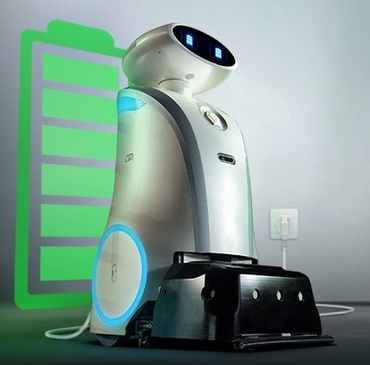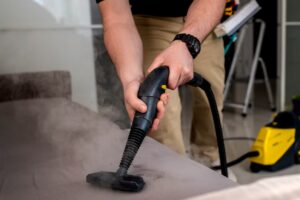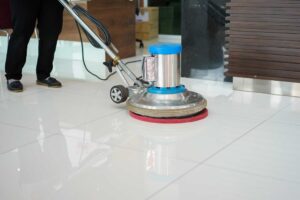
Undoubtedly, robotics have transformed various aspects of our lives, including floor cleaning. Indeed, the rise of robotic floor polishers represents a significant leap in cleaning technology. Fundamentally, clean floors are crucial for both homes and businesses, ensuring a healthy and visually appealing environment. Traditionally, methods of floor cleaning, such as mopping and vacuuming, often require considerable time and effort. Conversely, robotic floor polishers offer a convenient, efficient, and effortless solution.
Specifically, these advanced machines navigate autonomously, detecting dirt and grime, and polishing floors to a pristine finish. Moreover, equipped with smart sensors and efficient cleaning mechanisms, they handle the task with precision and consistency. Consequently, the shift towards robotic cleaning not only saves time but also provides consistently cleaner results. Therefore, more households and businesses are adopting these devices for their ease of use and effectiveness.
Notably, the evolution of robotic floor tile polishing, from basic models to sophisticated, feature-rich machines, highlights the ongoing innovation in this field. Furthermore, key players in the market continually introduce improvements, making these robots smarter and more efficient. In conclusion, this introduction sets the stage for exploring the rise, functionality, benefits, and future of robotic floor polishers in the subsequent sections.
The Rise of Robotic Floor Polishers
Floor-cleaning technology has indeed come a long way. Initially, cleaning floors took a lot of time and hard work. Previously, people used simple tools like mops and brushes. Subsequently, vacuum cleaners came along and made things easier. Now, robotic floor polishers are consequently the latest step in this journey.
Initially, robotic polishers started as simple devices. At first, they could only clean small areas and needed a lot of help. However, over time, they have become more advanced. Today, consequently, many top companies make these smart machines. As a result, they use advanced technology to clean floors quickly and well.
Notably, several big names in the market include iRobot, Ecovacs, and Roborock. Undoubtedly, these companies lead the way in making smart, efficient robotic floor polishers. Furthermore, they offer a range of models to fit different needs and budgets. Thus, this makes it easier for people to find the right robot for their home or business.
How Robotic Floor Polishers Work
Robotic cleaning services work using advanced technology. Specifically, they have sensors that help them move around and avoid obstacles. Moreover, these sensors detect dirt and stains, ensuring thorough cleaning. Additionally, the robots come with brushes and pads that scrub and polish floors effectively.
Firstly, the process starts with the robot mapping the area. Subsequently, it uses sensors to create a map of the room. Consequently, this helps it plan the best cleaning route. As the robot moves, it continuously adjusts its path to avoid furniture and other obstacles. Ultimately, it ensures no spot is left dirty.
Furthermore, there are different types of robotic floor polishers. For instance, some are designed for homes, while others are made for larger spaces like offices and shops. Generally, home models are smaller and quieter. Notably, they are easy to use and maintain. In contrast, larger models have more power and can clean bigger areas in less time.
Benefits of Using Robotic Floor Polishers
Indeed, robotic floor polishers offer many benefits. Primarily, they save time, ensuring your floors are always clean without much effort. Consequently, here are some key advantages:
-
Time-saving Advantages:
- Robotic floor polishers work on their own. You can set them to clean at any time. This means you can focus on other tasks while the robot cleans your floors.
- They clean faster than manual methods. The robot moves quickly and covers the entire floor. This saves you hours of work each week.
- Some models have scheduling features. You can program them to clean at specific times. This ensures your floors are cleaned regularly without any extra effort.
-
Consistent and Efficient Cleaning:
- Robotic floor polishers clean thoroughly every time. They use sensors to detect dirt and stains. This ensures no spot is missed.
- The robots follow a set path. This means they clean every part of the floor. Manual cleaning can be inconsistent, but robots provide even cleaning.
- Advanced models have multiple cleaning modes. You can choose the right mode for your needs. This ensures optimal cleaning performance.
-
Reduced Manual Effort:
- Using a robotic floor polisher means less physical work for you. You don’t need to scrub or polish floors by hand. The robot does the hard work for you.
- This is especially helpful for people with limited mobility. Robotic polishers make floor cleaning accessible to everyone.
- The robots are easy to use. You can control them with a remote or a smartphone app. This makes the process simple and convenient.
Choosing the Right Robotic Floor Polisher
Choosing the right robotic floor tile polishing service can indeed seem overwhelming. However, there are many options available. Nevertheless, finding the best one for your needs is easier if you know what to look for. Consequently, here are some key factors to consider:
Factors to Consider
1. Size of Your Space
- The size of your space is important. Smaller robots are ideal for homes and small offices. Larger models work better in big spaces like warehouses.
- Measure your floor space before choosing. This ensures you get a robot that can handle your cleaning needs.
2. Features and Functions
- Different robots come with various features. Some have multiple cleaning modes. Others can connect to Wi-Fi for remote control.
- Look for features that match your needs. If you have pets, choose a model with strong suction. For hardwood floors, pick a polisher with gentle brushes.
3. Battery Life
- Battery life is crucial. Longer battery life means the robot can clean for extended periods without needing a recharge.
- Check the battery specifications. Choose a model that can clean your entire space on a single charge.
4. Price
- Price is a big factor. Robotic floor polishers range from budget-friendly to high-end models. Set a budget before shopping.
- Compare prices and features. Sometimes, spending a bit more means getting a better, more durable product.
User Reviews and Ratings
User reviews and ratings provide valuable insights. Here’s how to use them:
1. Read Multiple Reviews
- Look at reviews from different sources. This gives a balanced view.
- Pay attention to common themes. If many users mention a specific problem, it’s likely a real issue.
2. Check Ratings
- High ratings often indicate a good product. But read the reviews to understand why users like it.
- Look for ratings on features that matter to you. For example, battery life, ease of use, or cleaning efficiency.
3. Consider Expert Opinions
- Experts often test and review products in detail. Their insights can help you make an informed choice.
- Look for reviews from trusted tech sites or consumer reports.

Tips for Effective Use of Robotic Floor Polishers
Using your robotic floor polisher effectively ensures you get the best results. Here are some tips:
1. Setup and Maintenance
- Follow the setup instructions carefully. The proper setup ensures optimal performance.
- Regular maintenance is key. Clean the brushes and sensors to keep the robot working well.
2. Best Practices for Optimal Performance
- Clear the floor of obstacles. This helps the robot move freely and clean thoroughly.
- Use the scheduling feature. Set the robot to clean when you’re not home. This keeps your floors clean without any hassle.
3. Troubleshooting Common Issues
- If the robot stops working, check the manual. Many issues have simple fixes.
- Keep the software updated. Manufacturers often release updates that improve performance.
The Future of Robotic Floor Polishing
Robotic floor polishing technology continues to evolve. Here’s a look at what the future might hold:
1. Upcoming Advancements and Trends
- Expect more advanced sensors. These will help robots clean even more efficiently.
- Improved battery life is on the horizon. Future models will likely run longer on a single charge.
2. Potential Improvements in Technology
- Robots may become smarter. AI advancements could lead to better navigation and cleaning algorithms.
- Enhanced connectivity is another possibility. Future robots might integrate more seamlessly with smart home systems.
3. Broader Implications for Home Automation
- Robotic floor polishers are part of a larger trend towards home automation. As these technologies improve, homes will become smarter and more efficient.
- Expect more integration between devices. Your floor polisher might work with other smart devices to create a fully automated cleaning system.
Conclusion
Undoubtedly, robotic floor polishers represent a significant step forward in cleaning technology. Moreover, they offer convenience, efficiency, and ease of use. Consequently, by saving time, ensuring consistent cleaning, and reducing manual effort, these devices are a valuable addition to any home or business.
Furthermore, using your robotic floor polisher effectively involves proper setup, regular maintenance, and best practices. Additionally, future advancements in technology promise even better performance and greater integration with other smart home devices.
In conclusion, embracing robotic floor polishers is a step towards a cleaner, more efficient living or working space. Ultimately, the robot revolution in floor polishing is here to stay, making our lives easier and our floors cleaner.



